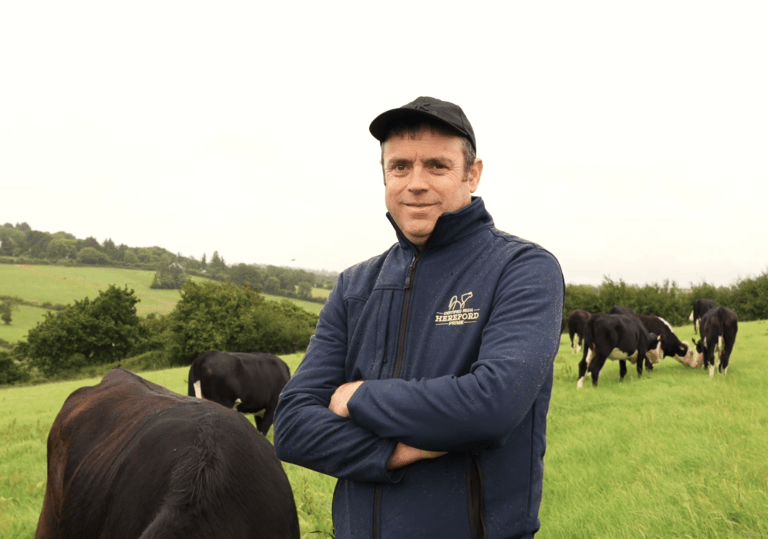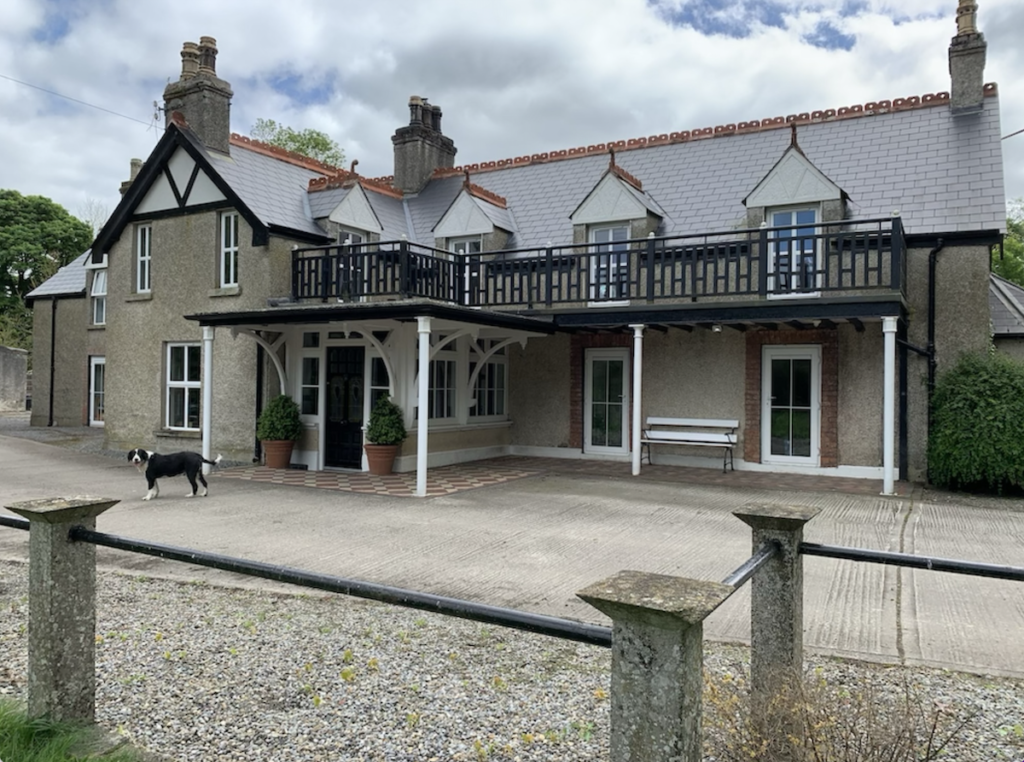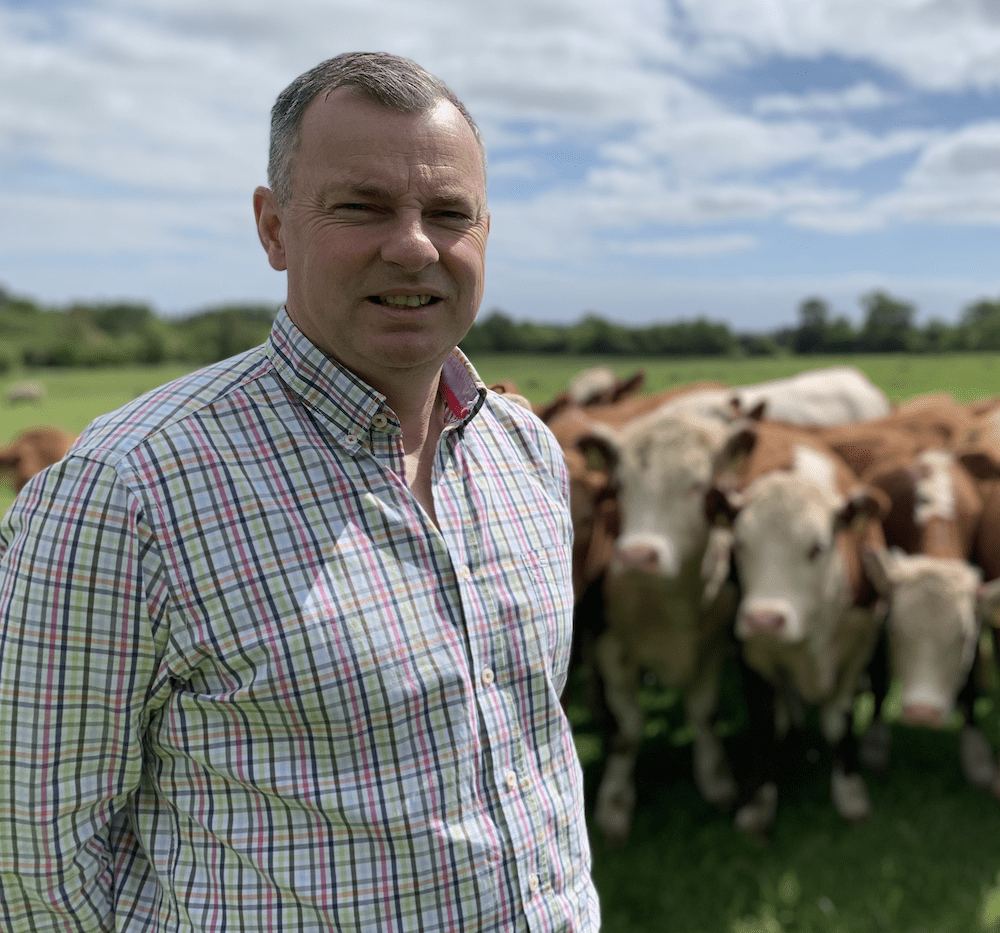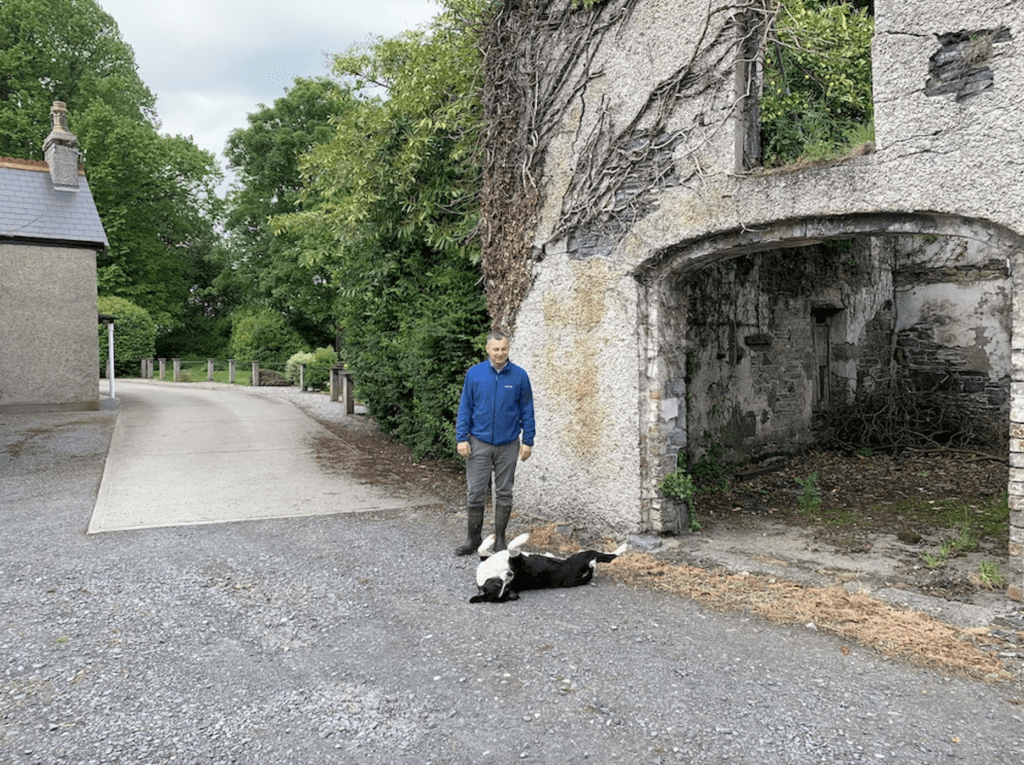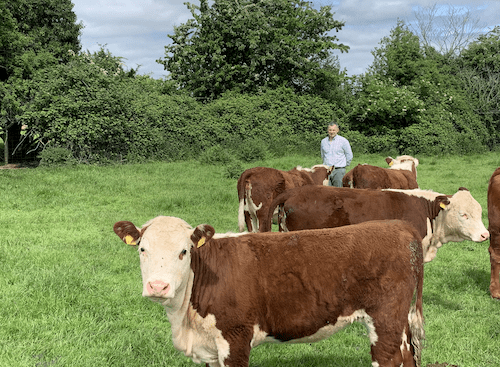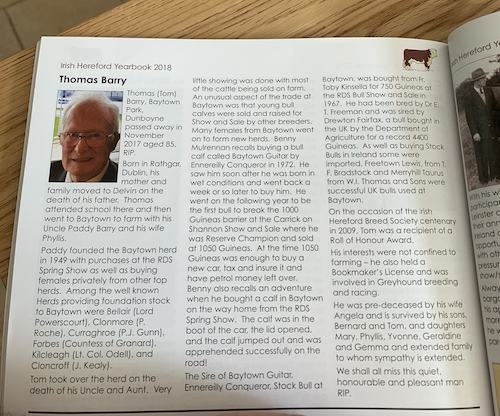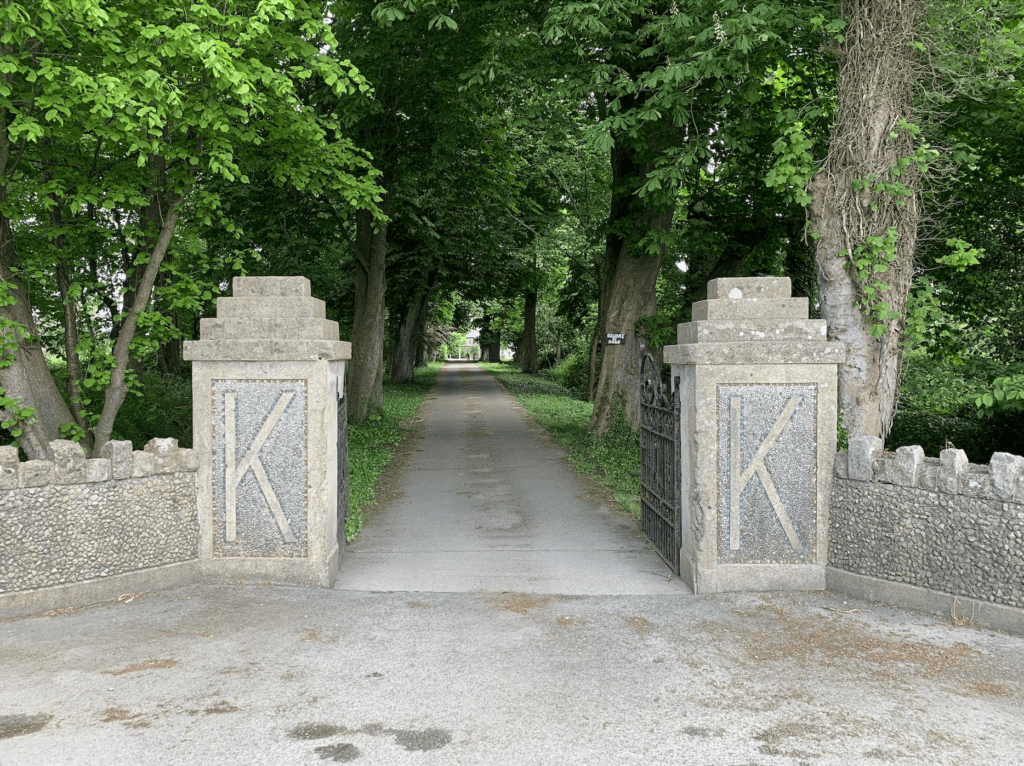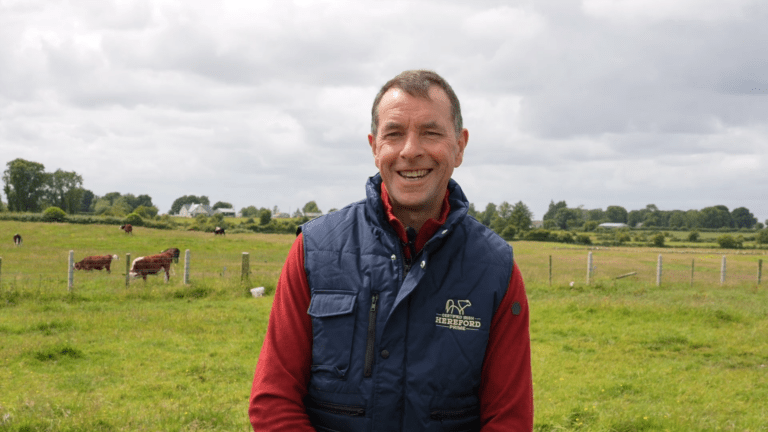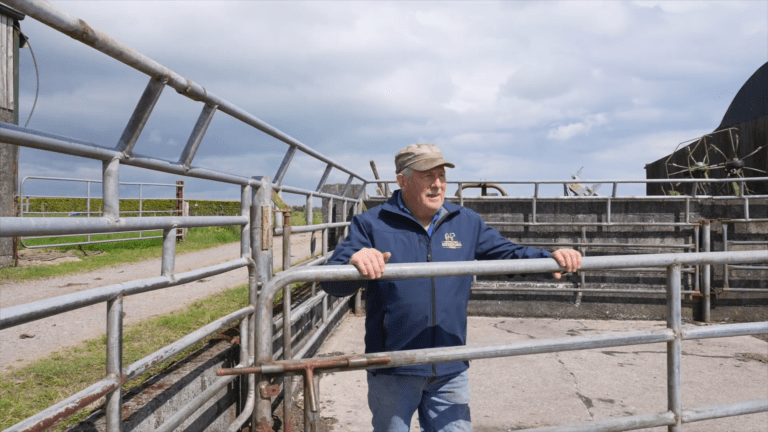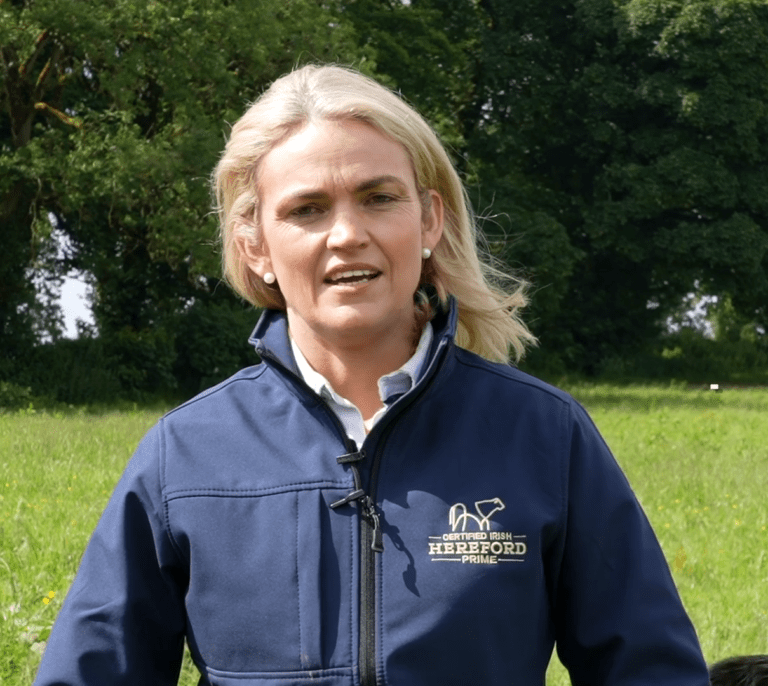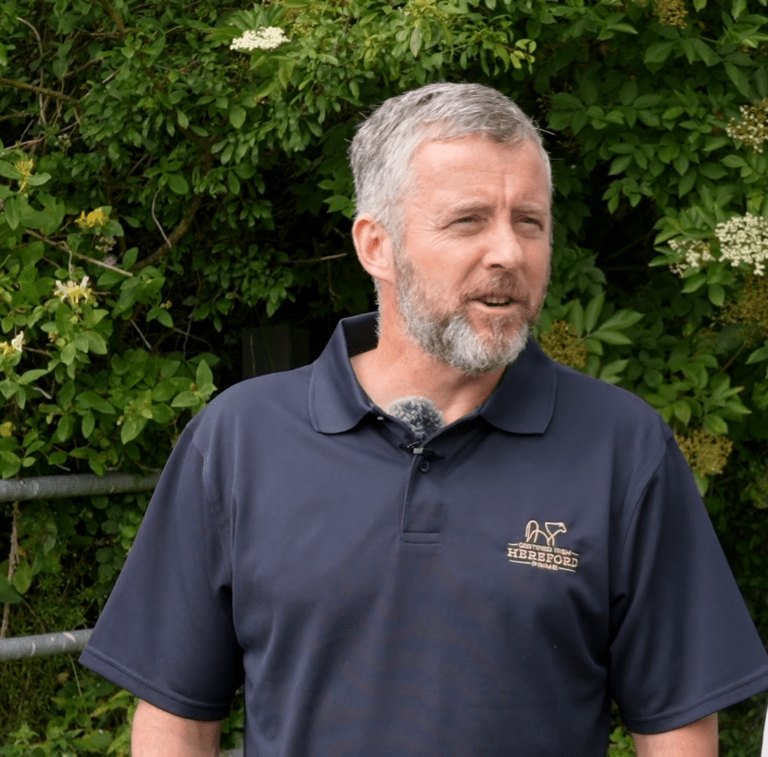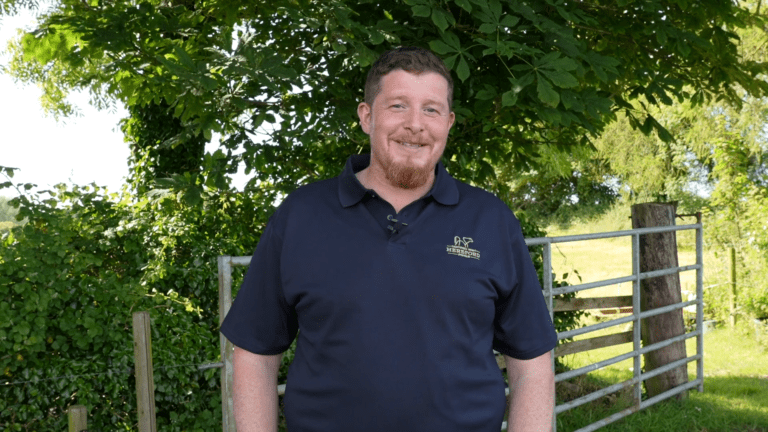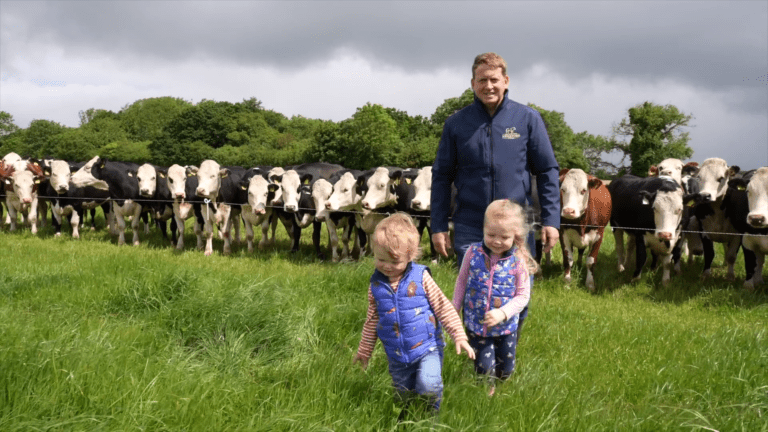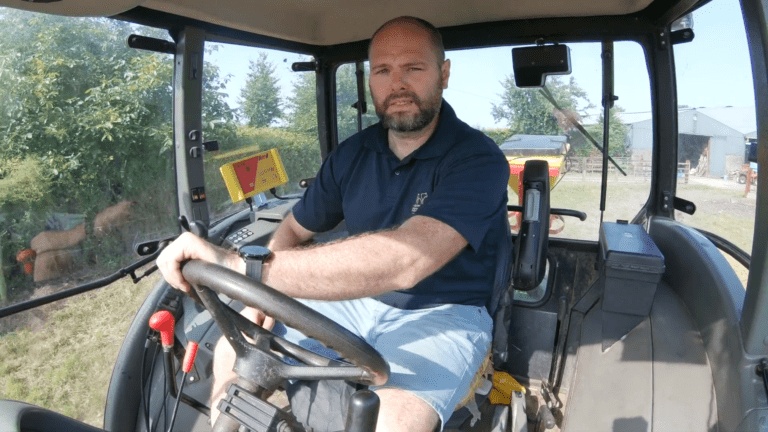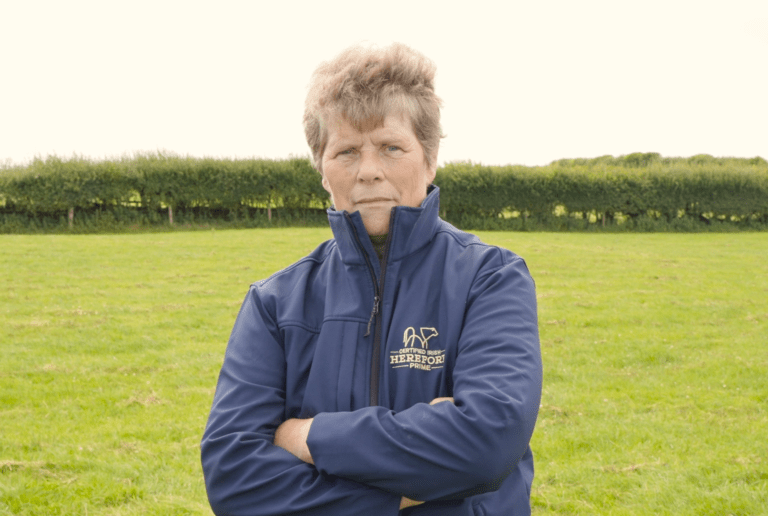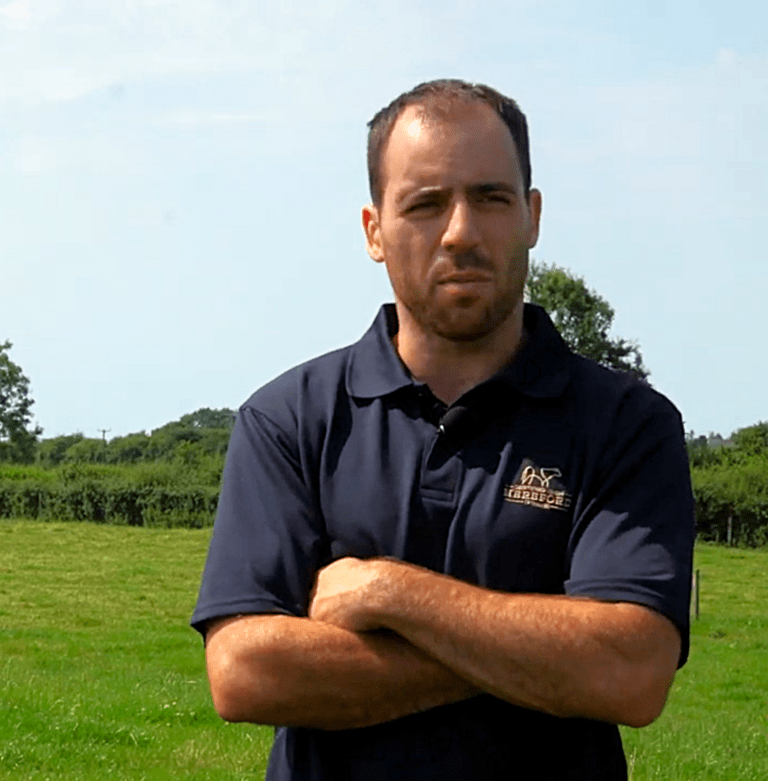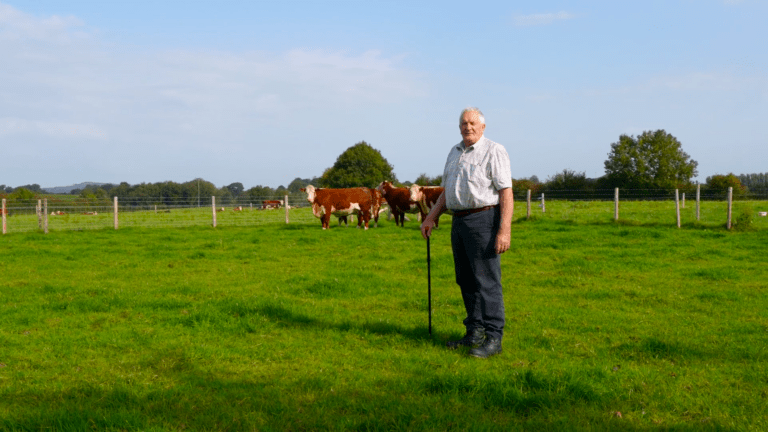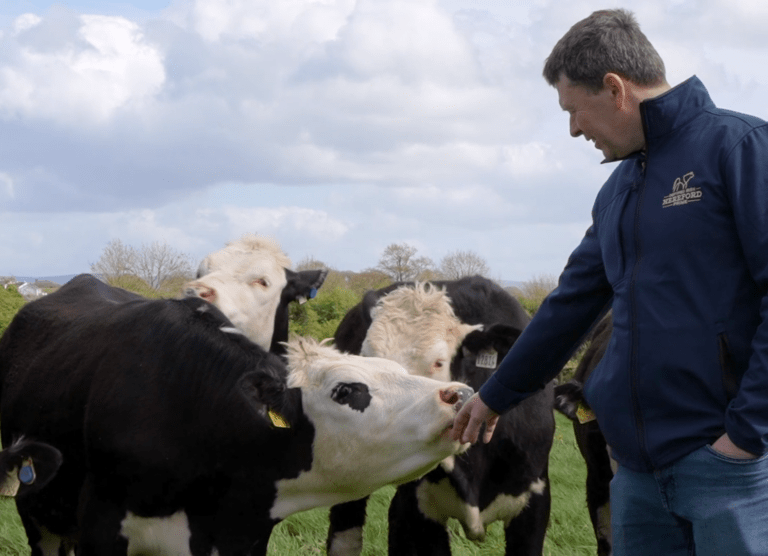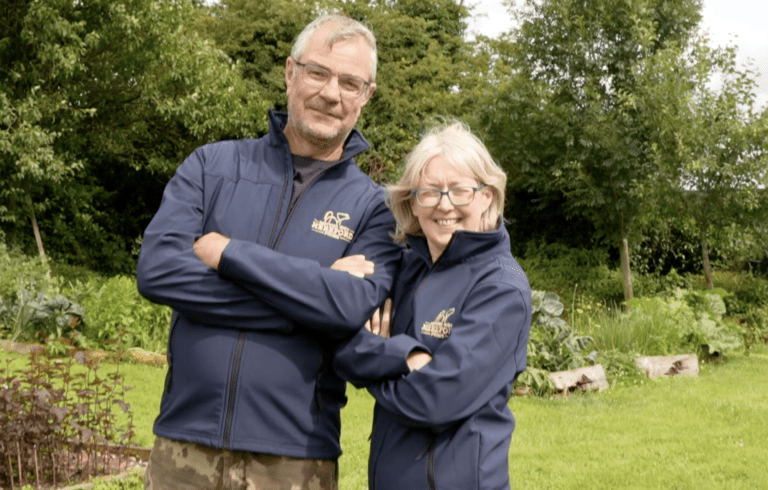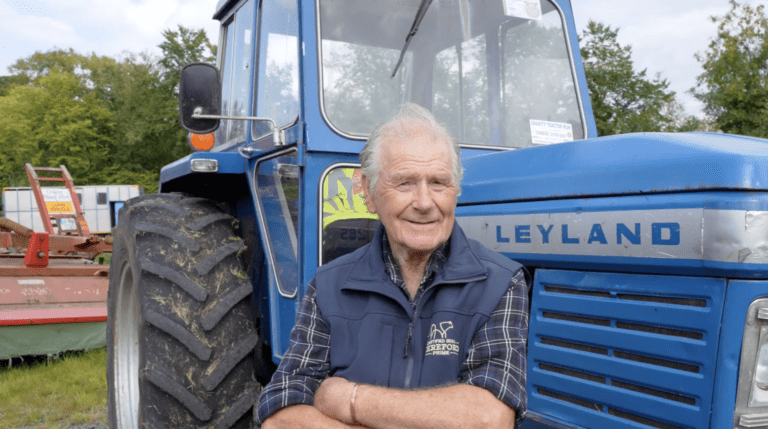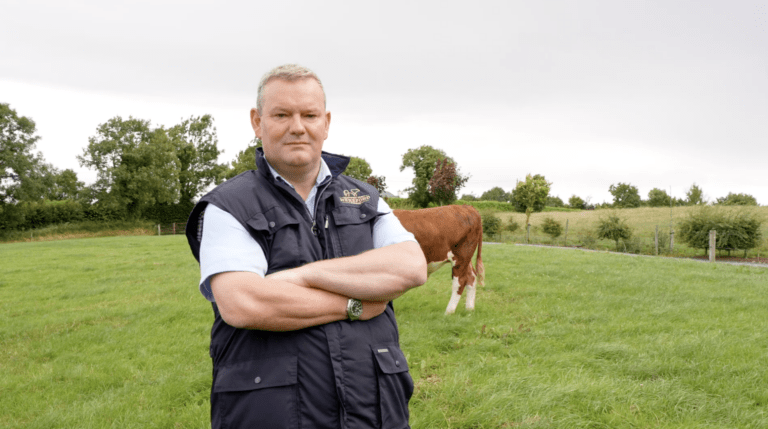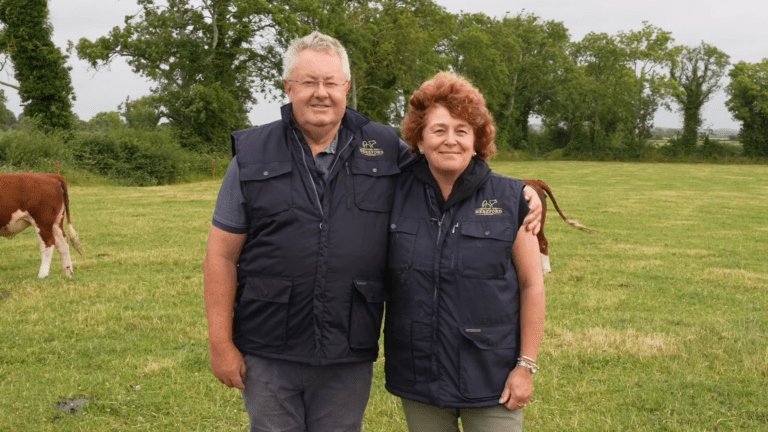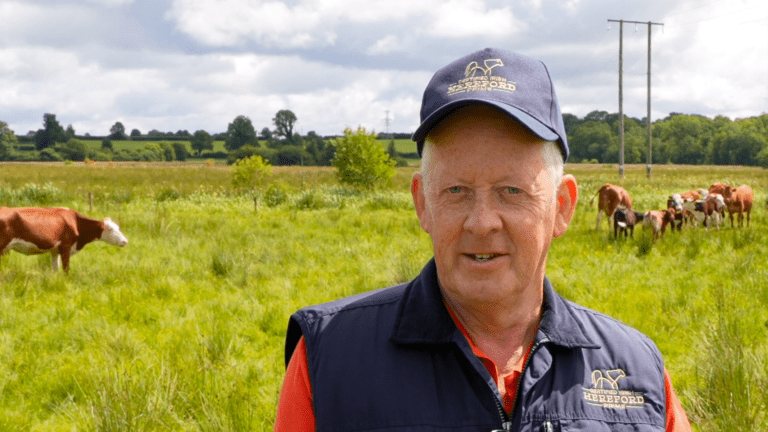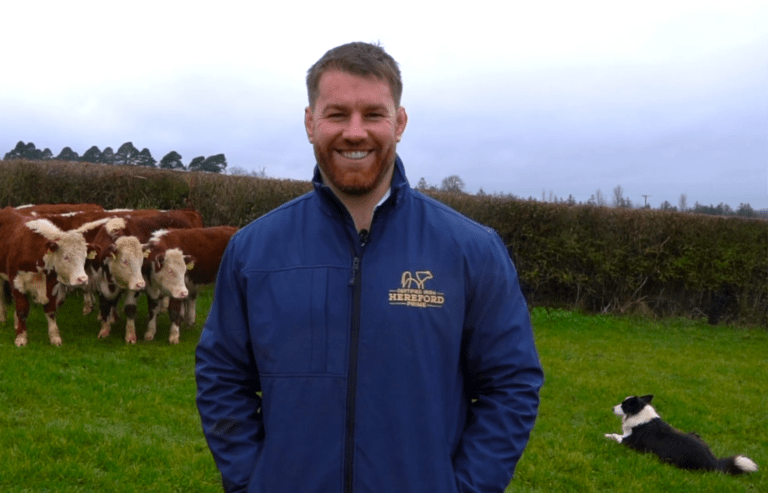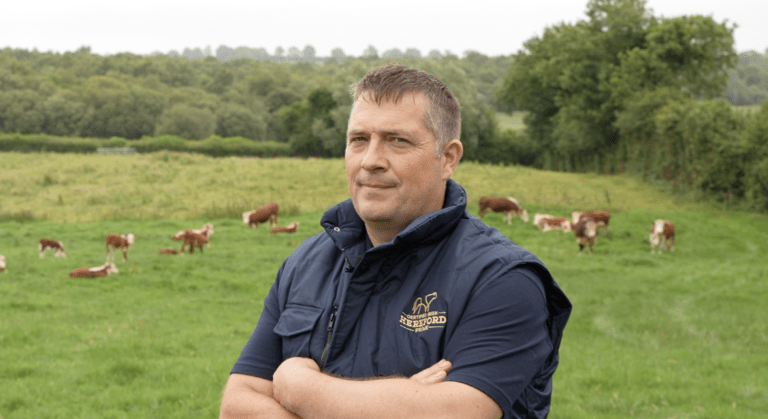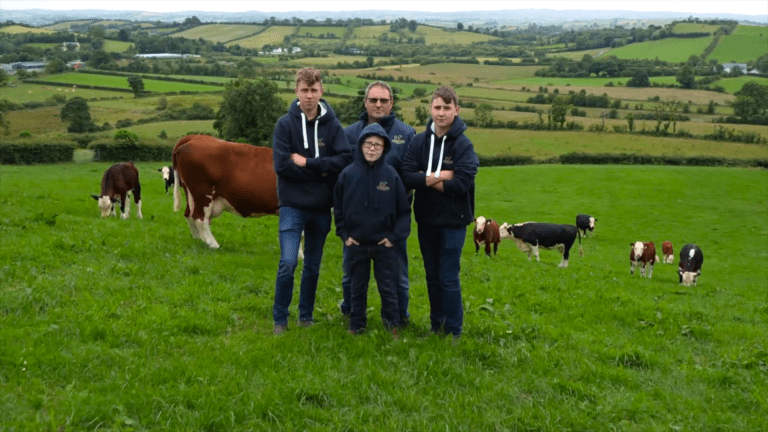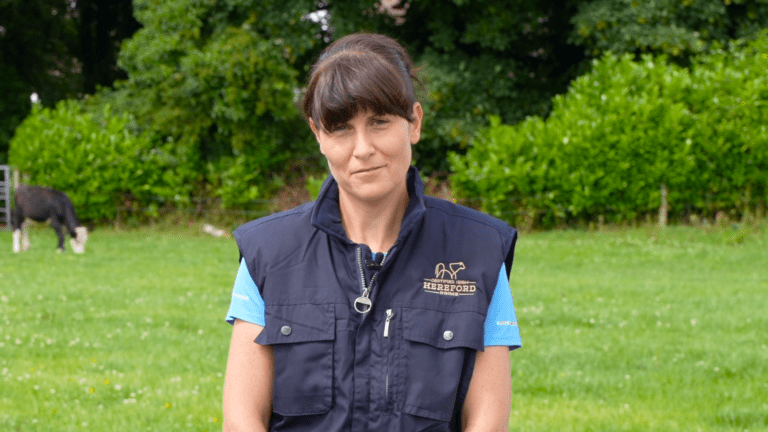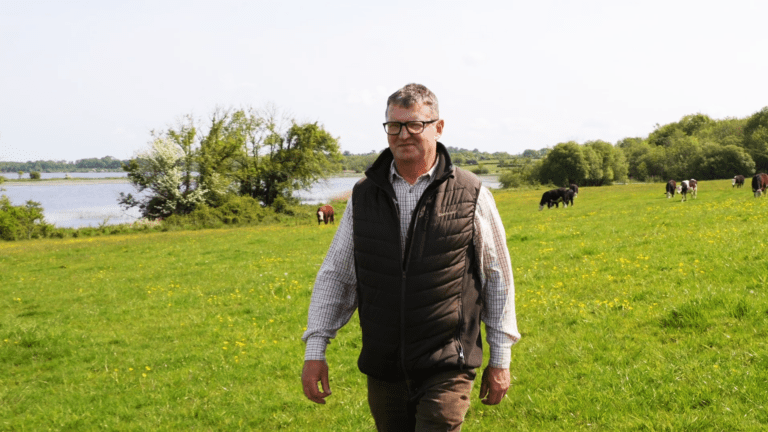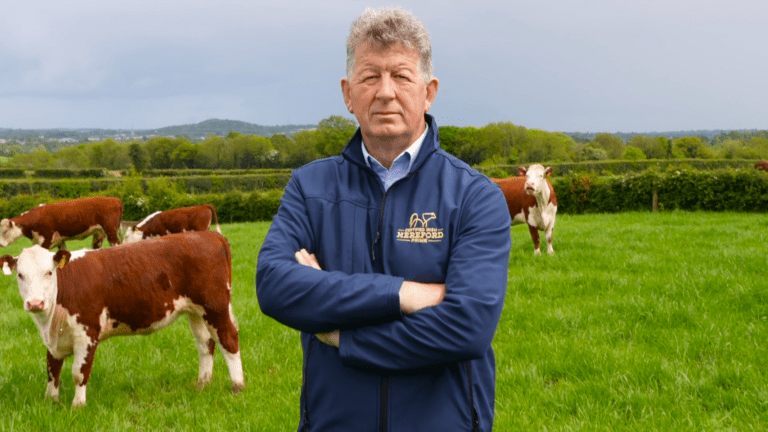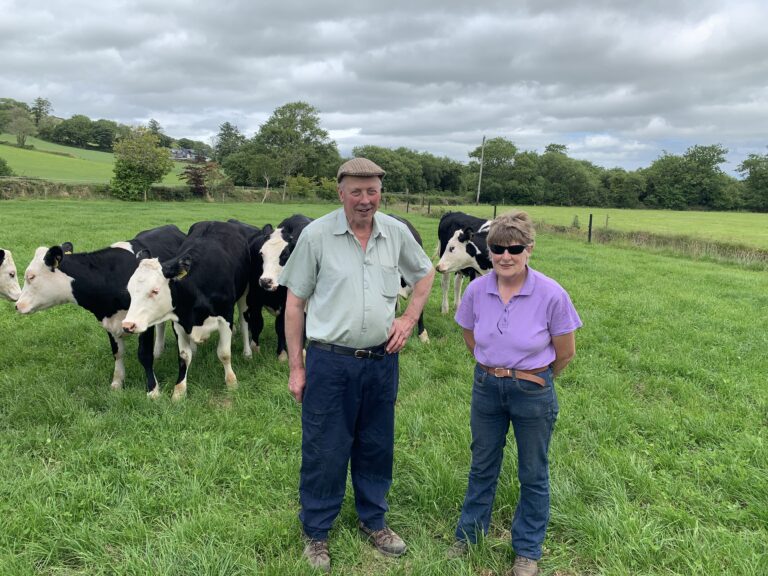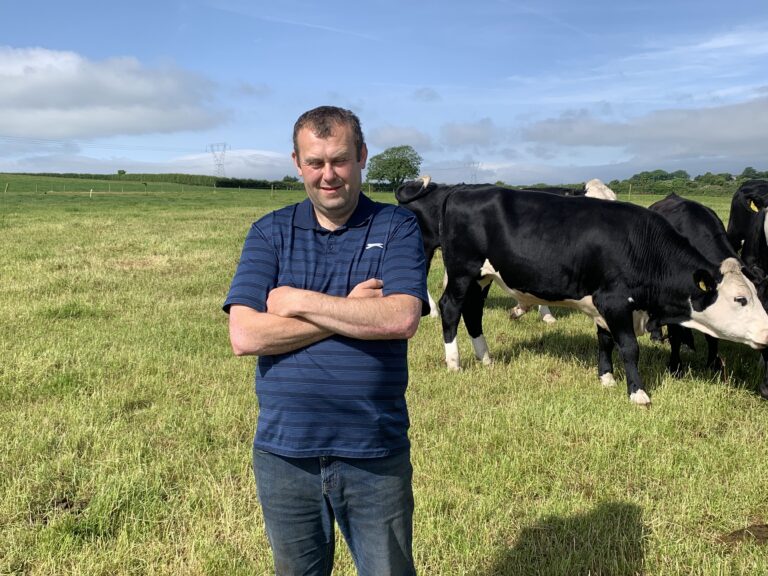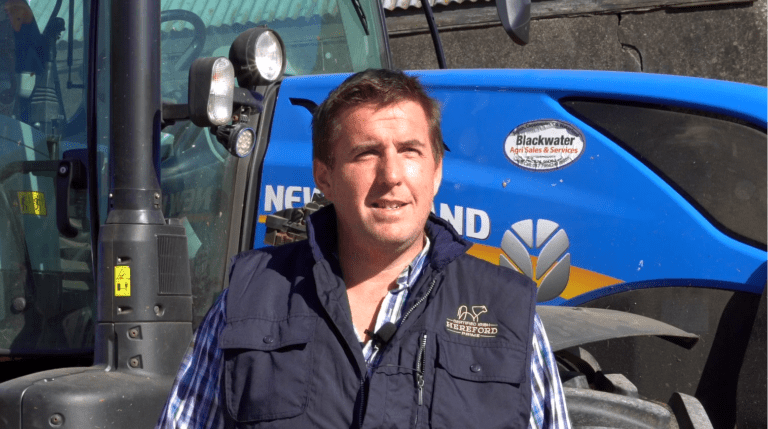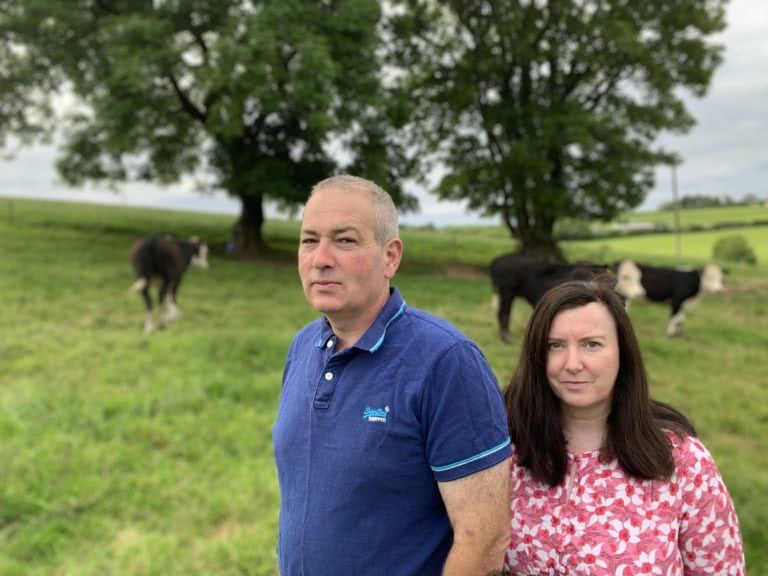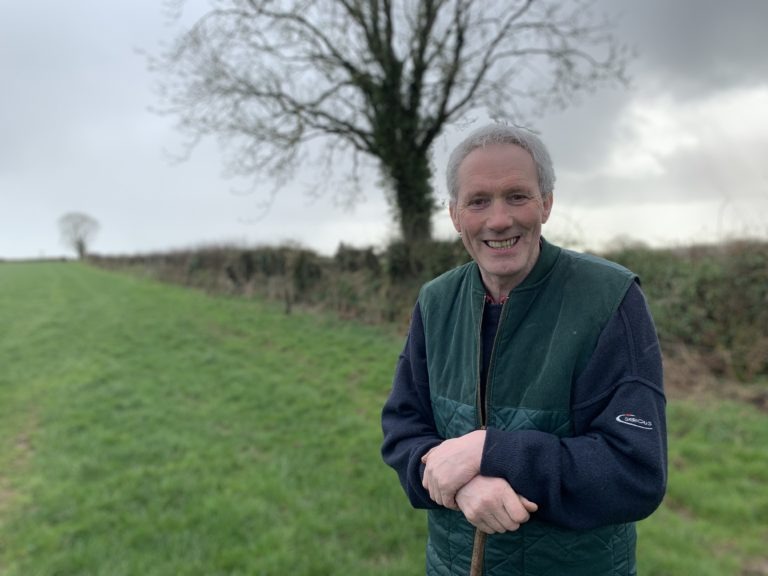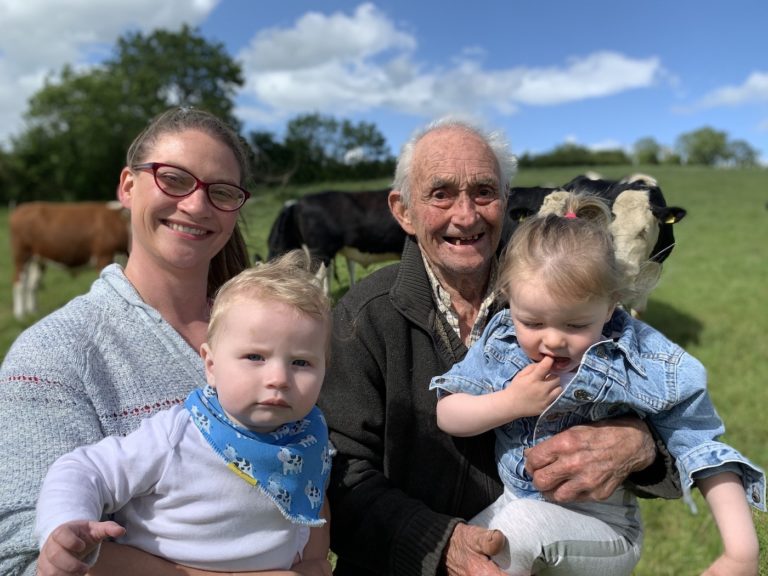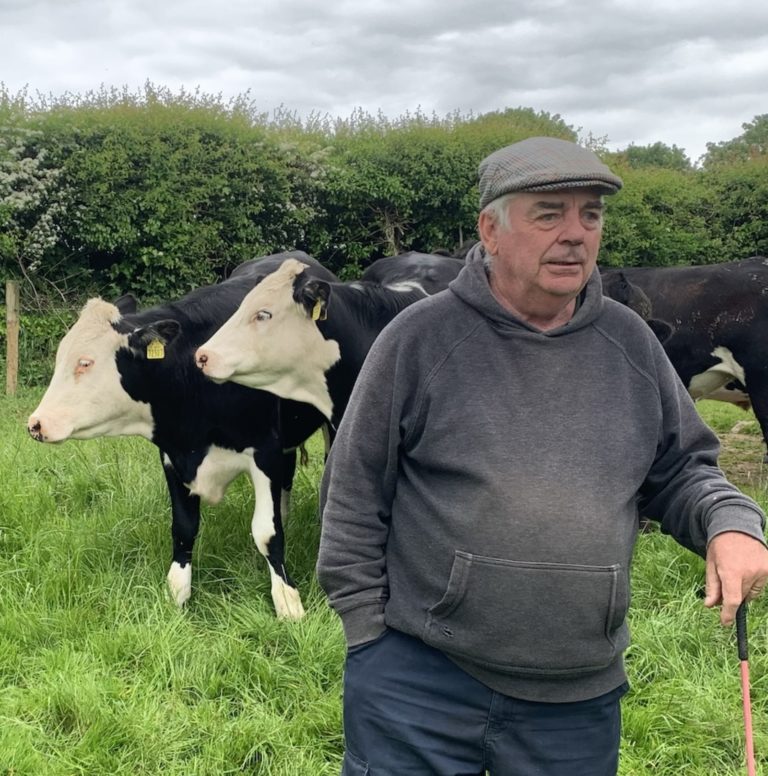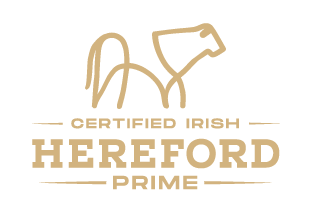We keep Hereford cross suckler cows as well as pedigree Hereford cows. We also have a flock of sheep that have lambs in Springtime. Herefords are such a lovely docile breed and as a part time farmer, with teenagers helping around the farm, it’s important to have a breed that’s easy to look after and handle.
When I select a new stock bull, I first look for easy calving, then correct feet and good conformation, along with terminal figures or traits. I try to utilise the grass to the maximum ability of the farm, some areas have heavy soil, so it’s not always easy to get the cattle out to grass early. I try to get them all turned out by late March.
Our farm is in the Green, Low-Carbon, Agri-Environment Scheme (GLAS) for the past 5 years, where we are required to complete a nutrient management plan and frequently take soil samples. Low input permanent pasture is another measure that we have adopted here as part of GLAS.
We are also part of the Beef Data and Genomics Programme (BDGP). This programme aims to improve the genetic merits of the national beef herd by collecting genotypes and data that enable the selection of the most efficient animals for breeding, which in turn contributes to lowering the level of Greenhouse Gas (GHG) emissions that are associated with the national beef herd.
Most recently we became involved in the DNA Calf Registration programme. This is a pilot programme to assess the time, the costs and the practicalities of a programme being rolled out at national level, which in turn will build on the objectives of BDGP Programme through the selection of more efficient animals for breeding.
